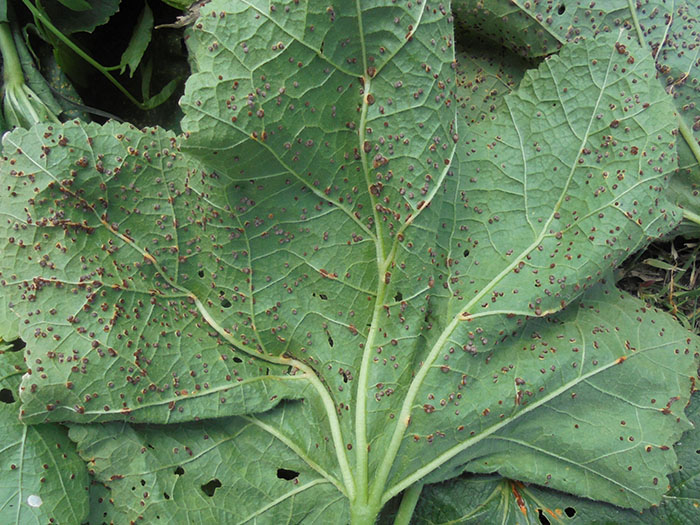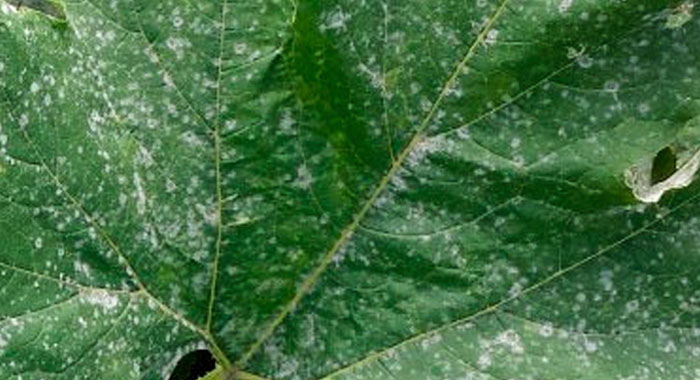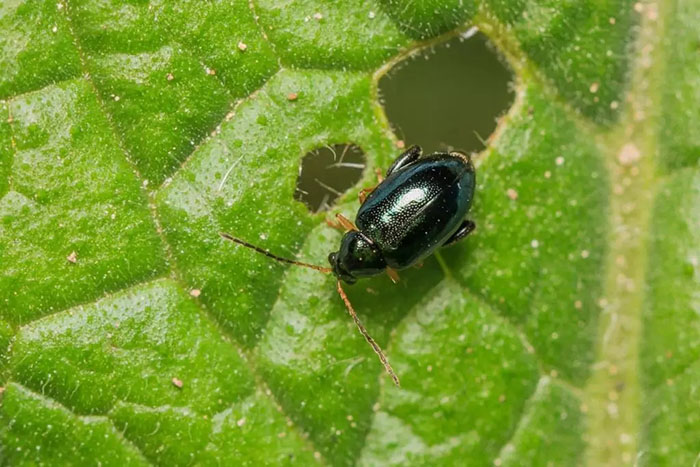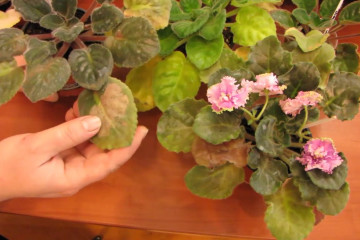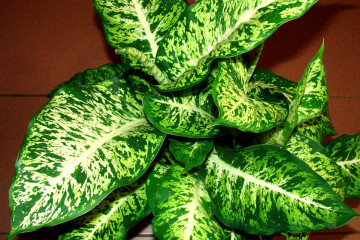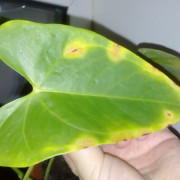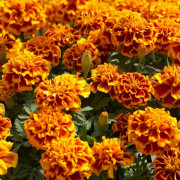Mallow diseases - causes and description
Content:
A perennial plant mallow, or stock-rose, is very interesting from a decorative point of view. Collected in spike-shaped inflorescences, large flowers of various shades adorn simple peasant-style front gardens and the most exquisite flower arrangements. Malva is also called malva, which has more modest flowers. Both mallow plants have a lot in common in their description and are often used by gardeners.
Healthy, well-developed plants bloom profusely until late autumn, gradually opening the lower buds first, then following up the flower arrow. However, specimens weakened by pests or diseases quickly lose their decorative effect. The leaves turn yellow, the buds dry without blooming. To help the plant, you need to understand what caused these problems.
Causes of mallow diseases
Disease provocateurs are bacteria, fungi, viruses, insects and care errors. Humid environments favor the spread of fungal infections, and pests spread in hot, dry conditions. Due to frequent changes in temperature, diseases quickly damage all parts of the plant. To stop the problem, it is important to make an accurate diagnosis in time.
Types of diseases
The lack of comfortable conditions for growth leads to oppression of plants, while creating a favorable environment for the development of diseases. The greatest harm to mallow plantings is caused by fungal and viral diseases.
Diseases caused by fungi affect the lower leaves, which dry up and die off. As a result, the plant becomes weakened, its flowering is delayed, and the stems are bare.
Viral diseases are considered even more dangerous. They quickly spread to neighboring flowers and are difficult to cure the plant from. Diseased mallow quickly loses its decorative effect.
Pathologies of mallow development can also be caused by a violation of the conditions for the life of the plant: light, heat and soil regimes.
Nonparasitic problems
Creating optimal growing conditions is a top priority for plant protection. Any mallow diseases recede before strong immunity, therefore it is so important to provide proper care. It includes: rare watering, good lighting, fertilizing with mineral fertilizers, timely removal of wilted leaves and flowers.
Diseases of a nonparasitic nature include:
- chlorosis, in which light yellow spots form on the leaves;
- falling buds;
- dropping leaves.
Such pathologies appear as a result of improper care and disappear after the elimination of deficiencies.
Bacterial diseases
Phytopathogenic bacteria cause diseases that lead to the death of the entire plant or its parts. Due to the blockage of blood vessels, a general wilting of mallow occurs, and local damage is manifested by necrosis of individual areas.Bacteria enter the plant either naturally (through water pores or stomata) or through mechanical damage. Infected flowers appear depressed and shed their leaves.
The antibiotic Fitolavin has a detrimental effect on pathogens. The treatment of the plant is carried out in the form of spraying and watering at the root.
Fungal diseases
Under certain conditions, diseases caused by fungi spread rapidly and lead to plant death. Most often this is due to excess moisture at low temperatures. It is important to recognize the disease in time and help the plant.
Red spots on mallow: what to do
The causative agents of rose stem rust disease are parasitic fungi of several species, but the symptoms are always the same. These are raised spots or stripes of brown color on the underside of leaves, petioles and stem. On the upper side of the leaf, they are projected with light yellow pimples.
Why does mallow have rusty leaves? Dark velvety pads with fungal spores form on them, due to which yellow-brown spots appear on the plant, similar to rust.
Rust on mallow causes increased evaporation of moisture, and over time - drying of the plant. A drug like Poliram will help fight mallow rust disease. This contact fungicide stops the synthesis of pathogen enzymes. Rust control measures on mallow also include cutting off diseased leaves and spraying the plantings with garlic infusion.
Powdery mildew
A white velvety coating on the leaves and buds of mallow indicates the appearance of powdery mildew. This disease, caused by a microscopic fungus, weakens the plant and spoils its appearance. Stagnation of water provokes the development of the disease. It is necessary to treat the affected plants with the Topaz fungicide.
Viruses
Viral diseases lead to a change in the shape and discoloration of the leaves. Lightened areas, spots and stripes of varying intensity appear on the plant. The foliage of the affected flower is deformed, and its growth is suspended. Disease carriers can be aphids and thrips. Diseased plants need to be removed, and instead, varieties that are resistant to viruses must be purchased.
Pests
The main enemies of mallow are aphids, spider mites and slugs. Sometimes the plant is attacked by leaf beetles and nematodes. Pests occupy the plantings of mallow and suck out the sap of the plant. It is the presence of pests that is often the answer to the question of why the leaves of mallow turn yellow. In addition, parasites contribute to the ingress of pathogenic microorganisms on the flower, which leads to the development of diseases.
Chemicals are used to control pests, but you must first determine exactly who eats mallow. There are drugs that help to cope with only one type of insect. For example, the acaricide Nissoran is extremely effective against various types of ticks, but is useless when fighting thrips.
Aphid
The size of an adult aphid is about 2.5 mm. Under favorable conditions, the insect multiplies rapidly, and by the end of the season, the entire aerial part of the mallow may be covered with aphids. Pests suck juice from the tops of shoots, petioles, leaves. Affected leaves curl, turn yellow and fall off.
Options for getting rid of aphids:
- Chemical etching. Aktara drug has a contact-intestinal action. It is applied at the root, and the upper part of the plant is treated by spraying. Insects die in 4-6 hours.
- Treatment with soapy water. In one liter of warm water, dilute 10 g of tar soap.
- Spraying with a solution of soda and salt. For 1 liter of water, take one tablespoon of funds.
Spider mite
Putin ticks are almost ubiquitous. These tiny green and reddish insects are extremely fertile. One female lays up to 150 yellowish eggs on the underside of the leaf, and during the summer it can develop up to 10 generations. Dry air encourages the spread of mites. Damaged plants quickly lose their attractive appearance. The undersides of the leaves are covered with a thin gray web, under which pests live and reproduce.
Control measures:
- The use of chemicals is the most effective way. A popular remedy for controlling arachnids is Anti-mite. This acaricide with a wide spectrum of action does not lose its effectiveness at high temperatures and quickly inhibits the vital activity of pests.
- The use of folk remedies. It has been noticed that onion phytoncides are toxic to spider mites. To get rid of the tick, use a two-day infusion of onions (20 g of onion husks per 1 liter of water). Three times spraying destroys the pest.
Nematodes
There are three types of nematodes: leaf, stem and root. These small, colorless worms invade plant tissues. The shape of the damaged mallow changes, and swellings are formed in places. The tissues gradually die off. Flowers develop poorly or do not form at all.
Getting rid of nematodes is difficult. They use drugs such as Karbofos (contact poison) or the universal nematicide Nemagon. The thickened parts of the plants are cut and destroyed.
Slugs
Often slugs annoy the plantings of mallow. They can be collected manually or set up traps - containers with beer for bait. Attracted by the smell of the intoxicating drink, the slugs crawl into the cans. It remains to collect and destroy them in the morning.
Leaf beetles
Adult leaf beetles gnaw holes in mallow leaves, feeding on plant sap. The larvae are able to eat the entire ground part of the plant. When a gardener discovers mallow leaves in holes, how to process them, the first question arises. Vinegar repels pests. Dilute 500 ml in a bucket of water and spray with the planting solution. With a large number of parasites, the drug Confidor is used.
How to protect a plant from diseases
A properly organized system of plant protection from pests and diseases includes not only effective methods of treatment, but also preventive measures. It is necessary to regularly inspect the plants, sterilize the soil with potassium permanganate or boiling water before planting, remove the dried parts of the plant. These simple steps help prevent pests and eliminate sources of infection.
The mallow plant is more prone to various diseases than other garden flowers. Pests also love to attack him. To reduce the frequency of occurrence of problems and reduce the damage from them, it is necessary to maintain the necessary conditions for the healthy development of the flower and regularly carry out prevention of diseases.

